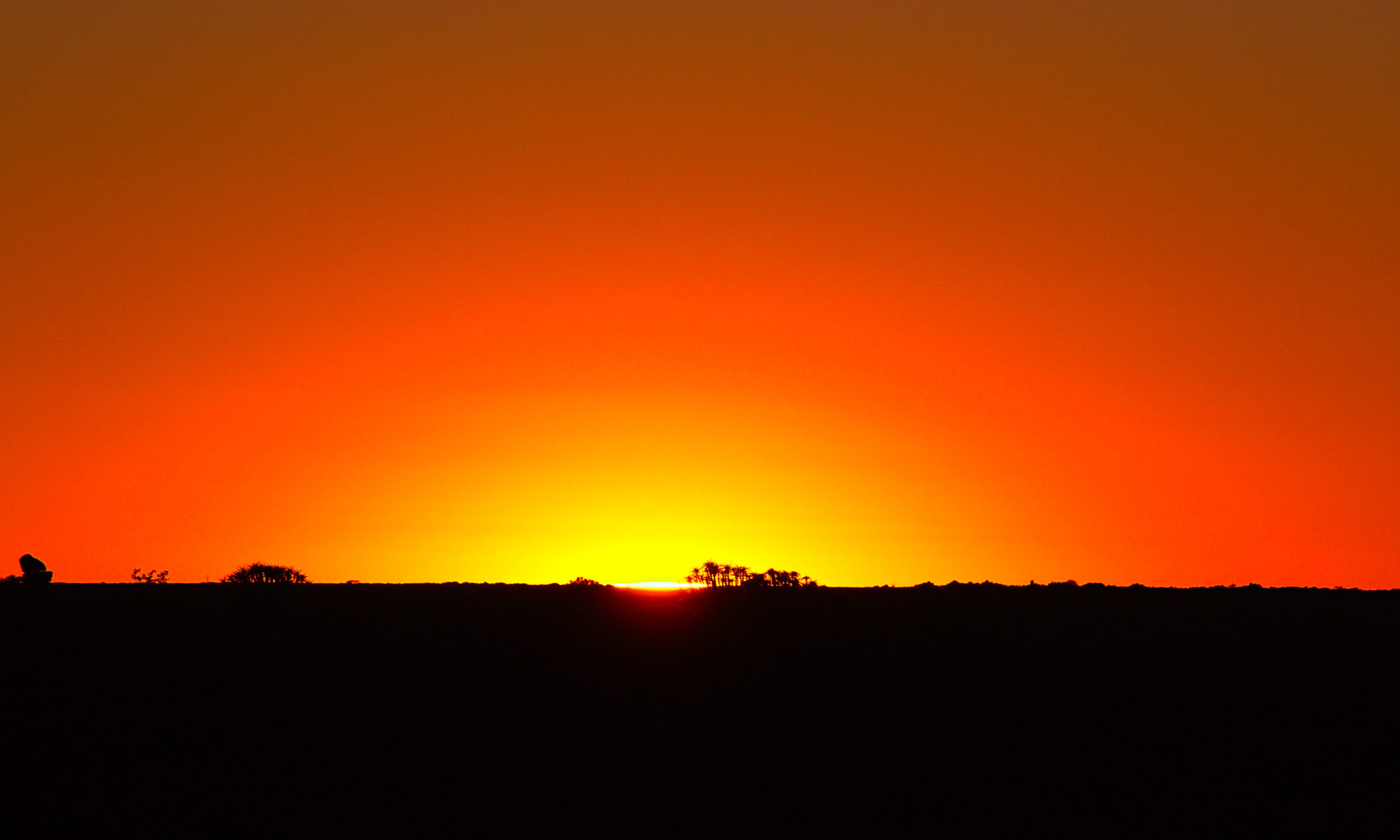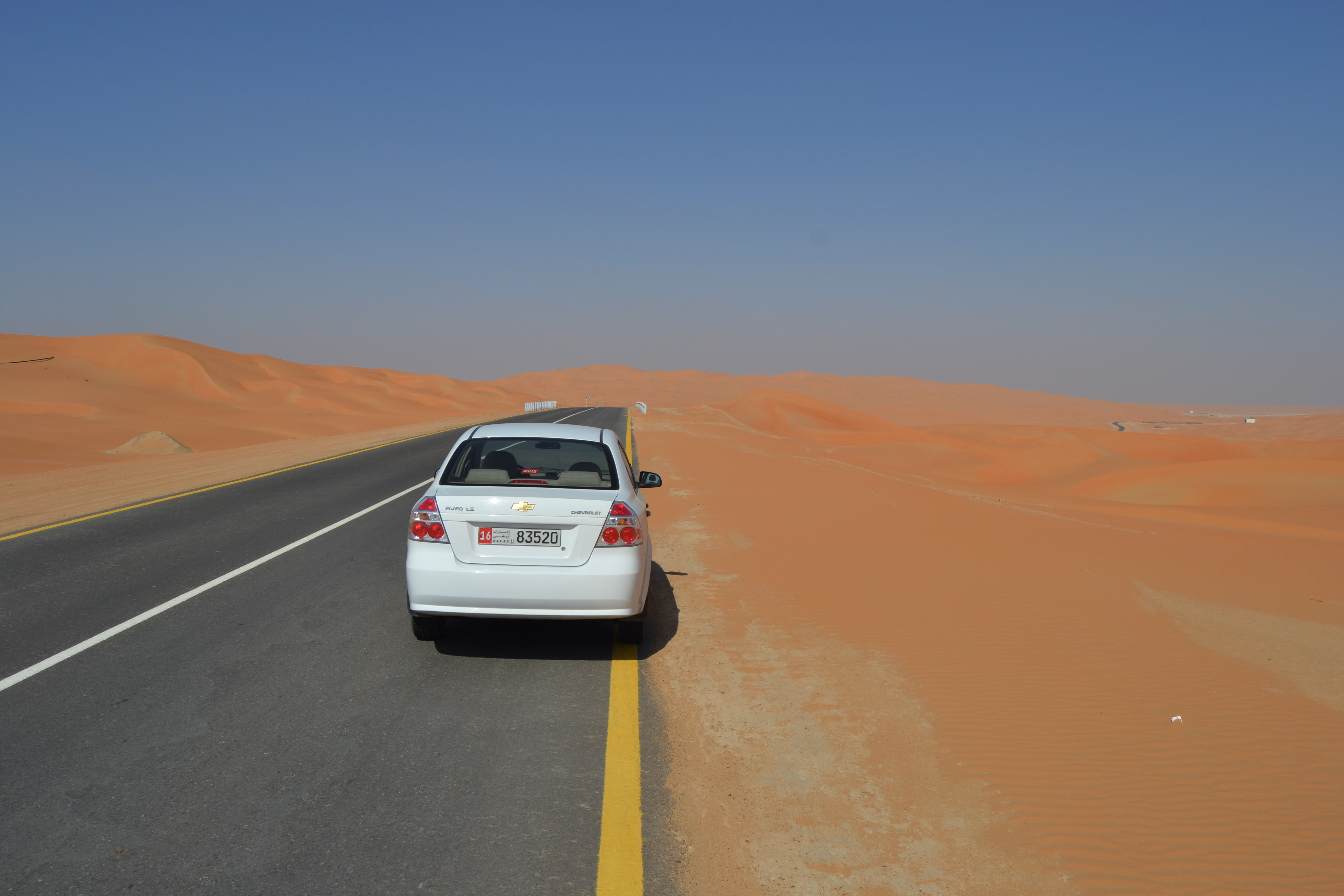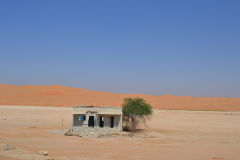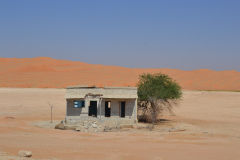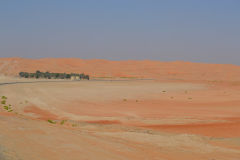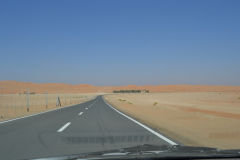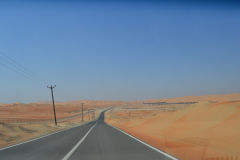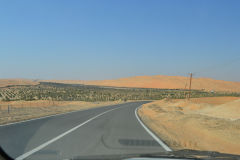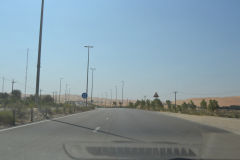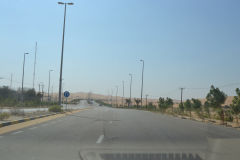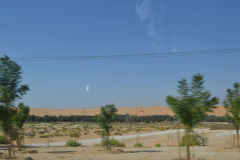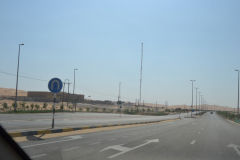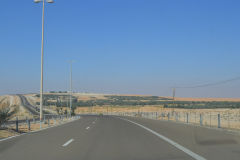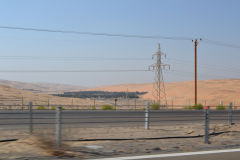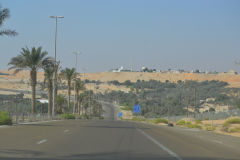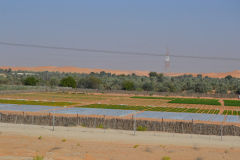The Rub Al Khali, also known as the „Empty Quarter,“ is a vast desert that covers much of the southern third of the Arabian Peninsula. Spanning across Oman, United Arab Emirates, Yemen, and Saudi Arabia, it is one of the largest sand deserts in the world.
The landscape of the Rub Al Khali is characterized by vast expanses of rolling sand dunes, interspersed with rocky outcroppings and gravel plains. The desert receives very little rainfall, with some areas receiving less than 2 inches per year, making it one of the driest places on Earth.
Despite the harsh conditions, the Rub Al Khali is home to a variety of wildlife, including the Arabian oryx, the sand gazelle, and the desert hare. Camels and goats are also commonly found in the desert, as they are well-adapted to the harsh environment.
The desert has been a major trade route for centuries, connecting the Arabian Peninsula with the rest of the world. Bedouin tribes have long been the main inhabitants of the desert, living a nomadic lifestyle, and trading goods across the region.
In recent years, oil and natural gas have been discovered in the Rub Al Khali, leading to increased exploration and development in the area. This has brought new infrastructure and economic opportunities to the region, but also has raised concerns over the potential impact on the environment and traditional way of life.
Despite the harsh conditions, the Rub Al Khali continues to captivate the imagination of adventurers, explorers, and scientists alike. The desert remains one of the last true wildernesses on Earth and continues to be a source of mystery and fascination for many.
History
The Rub al Khali, also known as the „Empty Quarter,“ is a vast desert located in the southern part of the Arabian Peninsula. The desert covers an area of around 650,000 square miles and stretches across parts of Saudi Arabia, Oman, the United Arab Emirates, and Yemen.
The history of the Rub al Khali dates back to ancient times, with evidence of human settlements in the region dating back to the 3rd millennium BC. The desert was home to various nomadic tribes, who would travel through the region in search of water and grazing land for their livestock. These tribes were known for their fierce warrior culture and their ability to survive in the harsh desert environment.
During the 7th century, the Arab tribes of the Arabian Peninsula began to unify under the banner of Islam. The Islamic empire expanded rapidly, and soon the desert became a major trade route for the transport of goods between the Mediterranean and East Asia. The desert was also a key location for the production of frankincense and other valuable commodities.
In the early 20th century, oil was discovered in the region, leading to a modern-day oil boom. This brought significant wealth to the countries in the Arabian Peninsula, but also brought major changes to the desert landscape and the traditional way of life for the nomadic tribes that had lived there for centuries.
Despite the changes brought by modernization and industrialization, the Rub al Khali remains a place of great natural beauty and mystery. It is also a place of great importance for the study of desert ecology, geology, and archaeology, with many scientific expeditions having been conducted in the region over the years.
In recent years, the Rub al Khali has been increasingly recognized as a unique and fragile ecosystem. Efforts have been made to protect the desert and its wildlife, with the creation of protected areas such as the As-Sahara Conservation Area in Oman and the Harrat Khaybar Reserve in Saudi Arabia.
Overall, the Rub al Khali is a place with a rich history and culture, and its significance extends far beyond its borders. It is a place where the past and present coexist, and it continues to be a source of fascination for many people around the world.
Geology
The Rub al Khali, also known as the „Empty Quarter,“ is a vast desert located in the southern part of the Arabian Peninsula. This desert covers an area of around 650,000 square miles and stretches across parts of Saudi Arabia, Oman, the United Arab Emirates, and Yemen. The geology of the Rub al Khali is unique and complex, with a variety of different rock types and landforms found throughout the region.
The geologic history of the Rub al Khali can be traced back to the Precambrian Era, more than 600 million years ago. During this time, the area was part of a large landmass that was covered by a shallow sea. The sedimentary rocks that were deposited during this time, such as sandstones and shales, can still be found in the region today.
As the landmass continued to evolve, volcanic activity and tectonic movements formed the mountains and highlands that can be found in the region today. The most prominent of these is the Sarawat Mountains, which run along the western edge of the desert. These mountains are composed of granite and gneiss, and are thought to have formed during the collision of the Arabian and African plates.
In more recent geologic times, the Rub al Khali has been shaped by the forces of erosion and deposition. The desert is home to a variety of different landforms, including sand dunes, gravel plains, and rocky outcroppings. The most famous of these landforms is the „Empty Quarter,“ a vast expanse of sand dunes that stretch across the heart of the desert. These dunes are thought to have formed as a result of the prevailing winds that blow across the desert.
The geology of the Rub al Khali is also significant for the resources it holds. Oil and natural gas reserves have been discovered in the desert, which have had a major impact on the economic development of the region. The desert is also rich in minerals such as copper, gold, and silver.
In recent years, the geology of the Rub al Khali has become increasingly important for scientific research. Studies of the desert’s geology are providing new insights into the processes that shape deserts and how they have evolved over time. Additionally, research in the region is helping to better understand the impact of climate change on desert environments and to develop strategies for managing and protecting the desert’s unique resources.
The geology of the Rub al Khali is a fascinating and complex subject. The desert’s unique landforms, rock types, and resources offer a glimpse into the Earth’s geologic past, and ongoing research in the region is shedding new light on the processes that continue to shape the desert today.
